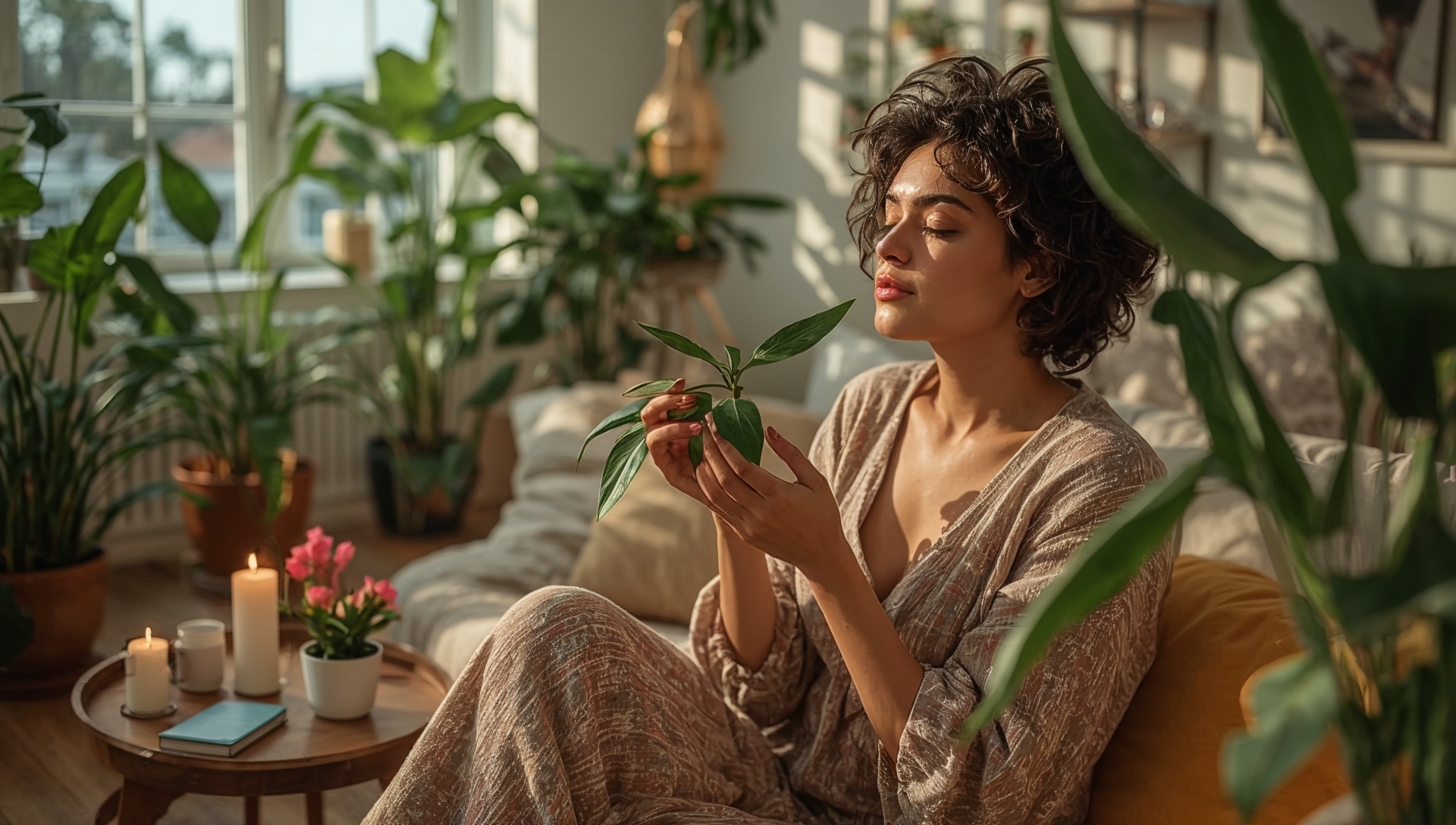In the fast-paced world we live in, mental well-being has become just as essential as physical health. While therapy, journaling, and meditation are often mentioned as emotional wellness tools, there’s one quiet, leafy companion that deserves attention: plants. More than just décor, plants can play a significant role in supporting emotional balance — especially for those living in apartments where nature may seem distant.
This article explores how the simple act of caring for indoor plants can become a powerful emotional anchor.
The Psychological Power of Green
Green is not just another color on the spectrum — it’s psychologically associated with calm, healing, and renewal. Studies in color therapy and environmental psychology consistently show that green environments reduce stress and promote feelings of peace and safety. For apartment dwellers, bringing green into the home is a way of introducing that healing energy into daily life.
Even looking at plants has been shown to lower cortisol levels. That means just glancing at a healthy, vibrant plant can begin to undo some of the mental strain caused by busy schedules and overstimulated environments.
Plants as Emotional Companions
While plants don’t talk or hug, they offer emotional companionship in subtle, meaningful ways. For people dealing with loneliness, anxiety, or emotional overwhelm, the presence of a living being that needs care — and responds to care — creates a sense of purpose and connection.
Caring for a plant requires attention, presence, and tenderness. These are the same qualities we often neglect in ourselves when we’re struggling emotionally. Through plant care, we learn to extend that care inward.
Regulating Emotions Through Routine
One of the cornerstones of emotional regulation is consistency — having a predictable routine that gives us a sense of control and rhythm. Watering your plants on specific days, turning them toward the light, checking their soil… these small acts form a nurturing routine that keeps you engaged with the present moment.
For people who suffer from anxiety, establishing these micro-routines around plant care can bring stability, reduce racing thoughts, and create positive habits that ripple into other areas of life.
The Therapeutic Act of Observation
When you spend time with your plants, you begin to notice things: a new leaf unfolding, a tiny bud forming, a change in the soil color. This observation-based attention is at the core of mindfulness — the practice of tuning in without judgment.
This shift toward awareness can influence how we treat our own emotions. We start observing our mood swings like we do our plants — not as problems to be fixed, but as signals to be understood.
Emotional Mirroring: Growth, Decay, and Renewal
Plants go through visible life cycles — they grow, shed leaves, sometimes wilt, and then return. Watching this natural rhythm helps us accept that emotional ups and downs are normal. Just as a plant has seasons, so do we.
This is especially valuable for people who struggle with perfectionism or emotional suppression. Seeing that wilting isn’t failure, and that recovery is possible with care and time, is a gentle but profound life lesson.
Plants for Specific Emotional States
Certain plants have specific benefits linked to emotional wellness:
- Lavender: Known for its calming scent, it helps reduce anxiety and promote relaxation.
- Snake Plant: Its structured, upright leaves evoke clarity and groundedness.
- Aloe Vera: Easy to care for and symbolizes healing.
- Peace Lily: Purifies the air and brings a sense of serenity.
- Rosemary: Stimulates memory and mental clarity — great for mental fatigue.
Adding these plants to your home creates not just a visual ambiance, but also a sensory ecosystem that supports emotional well-being.
Creating a Healing Green Corner
If you live in a small apartment, even a single dedicated corner with a few plants can become your emotional safe haven. Here’s how to create a healing plant corner:
- Choose plants based on how they make you feel, not just how they look.
- Add textures like wood, stone, or soft fabrics to make the space inviting.
- Include soft lighting, such as fairy lights or a warm desk lamp.
- Create a habit of sitting near your plants during emotionally heavy moments.
- Journal nearby or listen to calming music while surrounded by greenery.
This space can become your personal retreat — a place to regulate your feelings and breathe deeply again.
Bonding Beyond Words
When you care for plants, you develop a non-verbal relationship. You check on them. You learn their needs. You notice their growth. This bond can be incredibly healing, especially for people who have experienced trauma, loss, or emotional burnout.
Plants won’t give advice or judgment. They simply respond to your presence. That alone can be a balm for the soul.
From Isolation to Connection
People living in apartments — especially in cities — often experience emotional isolation. Nature can feel far away. But bringing plants into your space builds a bridge between your inner world and the natural one. That connection is essential for emotional vitality.
What may begin as a hobby can soon become a therapeutic ritual. The more you care, the more you connect — to your plants and to your deeper self.
Letting Plants Reflect Your Inner Growth
As you care for your plants over weeks and months, you may notice something: you begin to change too. Maybe you’re more patient. Maybe you’ve started slowing down. Maybe you’re more attentive to your needs.
Let your plants become a mirror of your personal growth. Celebrate when they sprout a new leaf — and celebrate your own emotional milestones, too.
Closing Thought: Growth Is Emotional
In the quiet rhythm of watering, pruning, and watching green leaves stretch toward the light, there is healing. Emotional balance doesn’t always require big gestures. Sometimes, it’s about showing up — gently and consistently — to care for something outside of yourself.
And in that process, you remember how to care for you.
